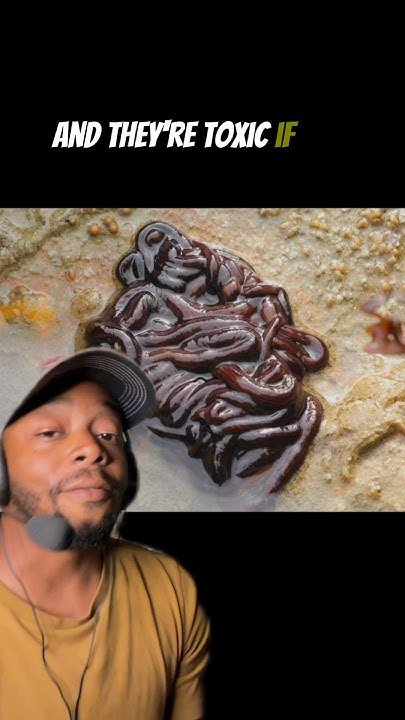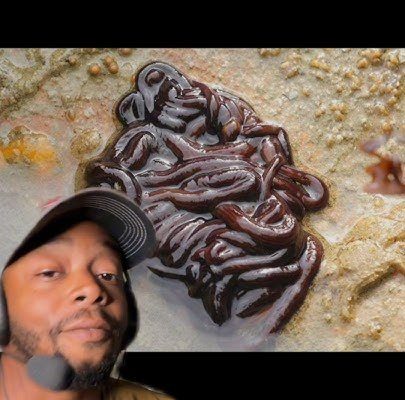
So, why should we care about this slimy secretion? Well, the bootlace worm’s toxic slime is not only interesting from a biological standpoint, but it also paints a picture of the complex interactions between species and ecosystems. Understanding these aspects can give us valuable insights into marine life and even inspire innovations in medicine and technology. Let’s dive into this slippery topic and explore what makes bootlace worm toxic slime so special.
What Is a Bootlace Worm?
Bootlace worms are long, ribbon-like creatures that can grow up to 30 meters (or about 100 feet) in length—yes, you read that right! To visualize, imagine a thick, spaghetti-like strand twisting and turning through the ocean floor. Found primarily in the waters around the UK and parts of Europe, these worms belong to the *Lineus* genus, which includes several species.
What sets bootlace worms apart is their incredible length and vibrant coloration, usually displaying hues of yellow, brown, or green. Their bodies are made up of segments with a soft and flexible structure, allowing them to navigate through sediments. But, as you might have guessed, their stunning appearance is just a facade. Underneath, they possess a fascinating mix of defensive strategies, including that famous slime.
The Slime: What Is It Made Of?
When it comes to the composition of bootlace worm toxic slime, think of it as a potent cocktail of chemicals. The slime contains **proteins**, **mucopolysaccharides**, and various **toxins**. These components work together to create a sticky, gooey substance that acts as both a defense mechanism and a means of capturing prey.
Here’s why each component is crucial:
- Proteins: These help in forming the structure of the slime, making it thick and viscous.
- Mucopolysaccharides: These sugars trap water, resulting in the slime’s gooey texture, which can immobilize other organisms.
- Toxins: Some of these are neurotoxic, deterring potential predators. Imagine it as an excellent deterrent that makes a would-be predator think twice before taking a bite!
It’s a complex recipe that reflects nature’s ingenuity. The slime itself may not appear harmful to us, but in the ocean, it serves as a formidable barrier against threats.
Why Do Bootlace Worms Produce Toxic Slime?
Here’s the thing: bootlace worms didn’t start producing toxic slime just for fun. This adaptation serves essential functions in their survival.
First, the slime acts as a **defensive mechanism**. When threatened, the worm can release this toxic goo to ward off predators. Fish and other marine creatures quickly learn to steer clear of these slippery fellows, thanks to the unpleasant experience of tangling with their slime.
Furthermore, the slime helps in **capturing prey**. The sticky substance can ensnare smaller marine animals and immobilize them, allowing the bootlace worm to feast without a chase. Imagine casting a fishing net, but instead, this worm uses its body to do the trapping!
Lastly, the slime plays a role in **protecting the worm** from environmental stressors, like harmful bacteria or parasites. It’s like a protective shield, allowing the bootlace worm to thrive in its habitat.
How Does Bootlace Worm Toxic Slime Affect Marine Ecosystems?
The impact of bootlace worm toxic slime extends beyond the worm itself. By deterring predators and capturing prey, the slime allows bootlace worms to maintain their population, contributing to the balance of marine ecosystems.
These worms are often found in environments rich in decaying organic matter. Their presence signals a healthy ecosystem where decomposers contribute to nutrient cycling. When bootlace worms thrive, it indicates that their habitat supports a variety of life forms.
Moreover, their slime can affect other organisms in the vicinity. For instance, the sticky substance can trap **plankton**, which is a vital part of the marine food web. This unwittingly aids in sustaining other marine species, illustrating how interdependent life can be underwater.
Are Bootlace Worms Dangerous to Humans?
You might be wondering if these creatures pose any threat to humans. While bootlace worms are intriguing, they’re generally not dangerous to us. However, that toxic slime can have some unpleasant effects if it comes into contact with skin or is ingested.
The neurotoxic components might cause mild irritation or an allergic reaction for some individuals. So, if you’re ever exploring tide pools or rocky shores, it’s wise to keep your distance from these slimy creatures. Think of them like your friendly neighborhood bee; they’re not out to hurt you, but it’s best to admire them from afar!
Potential Applications of Bootlace Worm Slime
Here’s where things get really exciting—scientists are starting to explore the potential applications of bootlace worm toxic slime. Its unique properties may lead to innovations in various fields, including medicine and materials science.
For instance, the slime’s stickiness and biocompatibility raise the possibility of developing new wound dressings that can prevent infections. Imagine a medical bandage that uses natural materials to protect wounds effectively while promoting healing.
Additionally, the chemical makeup of the slime could inspire advancements in creating adhesives that are eco-friendly and biodegradable. This could have a positive impact on reducing plastic waste—talk about a win-win!
Bootlace worm toxic slime might seem like a small detail in the vast ocean, but it embodies the complexity and beauty of marine life. From its role in the ecosystem to its potential applications, there’s so much to learn from these fascinating creatures.
Next time you hear about bootlace worms or come across their familiar slime, remember that there’s a whole world of science and survival intertwined beneath those waves. Embracing these wonders of nature can not only enhance our understanding of marine biology but also inspire innovative solutions for the future. So let’s appreciate these slimy marvels for all the incredible contributions they make to our planet!

